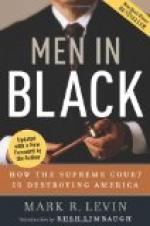“Ha, Ha,” thinks the lawyer “at last,” “didn’t you just now say you were sitting on the fourth seat?” “I don’t remember,” says the witness. “What,” thunders the lawyer, “you don’t remember; then your memory is poor. I will read you what you said on your direct examination,” and he does. “Now which was it, the sixth or the fourth seat.”
The other object of cross-examination is to elicit new facts. This is a dangerous risk for the lawyer, and unless he is sure of his ground, he had better not take it. He will do better to let his own side tell the facts than to bring them out through an unwilling witness who is on his guard and thinking the opposing lawyer is trying to trap him.
The mistake that most lawyers make in cross-examination is to ask the witness to repeat what he said in his direct testimony. Telling the same story over again merely accents the facts in the minds of the jury. The lawyer asks:
“You say that you saw the driver whip up his horses when the car was a block away.” The lawyer may doubt the truth of the statement but the mere repetition of the words affects the memory of the jury. Unless he has a distinct object in going over the testimony, either to show the direct contrary strongly, or the fact that the witness has learned the testimony by rote and that the repetition is in exactly the same words, the lawyer would do better to desist.
Strange as it may seem the rules of evidence are actually based upon common sense. The ordinary experience of mankind gave rise to the rules of evidence, but the difficulty is that the further experience of civilization is giving rise to new rules which are not consistent with the old. Nevertheless the present rules when reasonably applied are fairly good. The question really is whether there should be any at all.
Accepting the fact that there should be rules they are based on two principles; the first is that only something which has to do with a case can be proved and second that it can be proved only in a safe and reasonable way. It may seem impossible to the lawyer and equally to the laymen to state the rules of evidence in simple language. But the principles of common sense will govern in the end, as they have in the past, notwithstanding they have been hidden under a mass of verbiage, ancient forms, and obsolete customs.
The theory is that justice wants the highest and best it can obtain, the court insists on the two principal rules; that evidence must be the very best that can be obtained and must be brought out in the safest, clearest, and most authentic manner.
Take, for instance, the rule that conclusions of the witness are not allowed. If the court considered as evidence that the testimony “the defendant brought the goods and they were delivered,” and the defendant came on the stand and said, “I did not buy the goods and they were not delivered,” the court would have before it merely two contrary beliefs or conclusions. It would be a case of “Katy did, Katy didn’t.”




